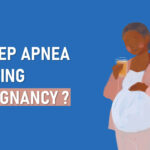- Swastik Clinic, Ahmedabad, GJ, IND
- Call: 8849867169 (For Appointment)
- Mon - Sat: 10 AM - 08 PM
- Sun: Only Emergencies
Treatment Options for Restrictive Lung Disease

Treatment Options for Restrictive Lung Disease
WHAT ARE RESTRICTIVE LUNG DISEASES?
Restrictive Lung Diseases are chronic lung conditions lungs can’t hold as much air as they used to. It limits the ability of a person’s lungs to expand during inhalation. Most cases of restrictive lung diseases are not curable, but they are pretty much manageable with medication and recommended exercises.
Since lungs are unable to fully expand, they limit the amount of oxygen taken in during inhalation.
SYMPTOMS OF RESTRICTIVE LUNG DISEASE
- shortness of breath, especially with exertion
- inability to catch their breath or get enough breath
- chronic or a long-term cough, usually dry, but sometimes accompanied by white sputum or mucus
- weight loss
- chest pain
- wheezing or gasping breath
- fatigue or extreme exhaustion without a logical reason
- depression
- anxiety
TREATMENT FOR RESTRICTIVE LUNG DISEASE
There are many types of treatments available to manage the condition and ease the symptoms. Your pulmonologist will decide the treatment by severity of lung disease, your age, medical history and overall health.
The treatment is mainly focused on making breathing easier and slowing the progression of the disease. Let us see various treatment options, not limited by the list below though:
Immunosuppressants
Sometimes restrictive lung disease occurs due to autoimmune connective tissue disorders. An autoimmune disease causes the immune system to attack healthy cells and can affect the lungs, other organs, and the lining of your joints, scarring them and making them harder.
Medications known as immunosuppressants engages in blocking the action of the body’s immune system & prevent them attacking healthy cells.
Inhalers
These are small hand held devices that gives a quick blast of medications into your bronchial tubes to relax them. The medication inside the inhaler fights the inflammation in the lungs and helps reversing the disease.
Expectorants
Restrictive lung disease such as pneumoconiosis causes a build-up of phlegm and mucus in your airways. People who work in factories and mines are at higher risk. When the lungs can’t get rid of the dust they become scarred.
Expectorants come in pill or liquid form. These medications make it easier to clear your airways of mucus.
Oxygen therapy
This is a treatment in which pumping oxygen from a portable tank is carried out. Pumping is done through a tube to the mask worn over your nose. The goal is to increase the amount of oxygen you inhale. People with a restrictive lung disease, such as idiopathic pulmonary fibrosis (IPF), can benefit from oxygen therapy.
Again your doctor can determine how much oxygen therapy you need based on your condition and activity level.
Pulmonary rehabilitation
Pulmonary rehabilitation is usually an outpatient program. This program will teach you more about your condition, safe and effective exercise options, breathing techniques, nutrition, and how to conserve your energy.
Ask your doctor to enroll into the pulmonary rehabilitation program.
Lung transplant
Lung transplant is an option when the condition with restrictive lung disease is most serious. If medications and other treatment options are not effective, your pulmonologist will recommend a lung transfer.
ENDING NOTE…
Most cases of restrictive lung disease are chronic, which means you need treatment for rest of your life. The type of treatment changes as your condition changes. If you maintain a healthy lifestyle and follow through with your medications and therapies as suggested by your pulmonologist, you may be able to live a long life.
Recent Posts
Archives
- April 2022
- January 2022
- December 2021
- November 2021
- August 2021
- July 2021
- June 2021
- May 2021
- April 2021
- March 2021
- February 2021
- January 2021
- December 2020
- November 2020
- October 2020
- September 2020
- August 2020
- July 2020
- June 2020
- May 2020
- April 2020
- March 2020
- February 2020
- January 2020
- December 2019
- November 2019
- October 2019
- September 2019
- August 2019
- July 2019
Categories
Recent Posts


I Got Covid-19 & Have Asthma – What Now?
09th Jan 2022
